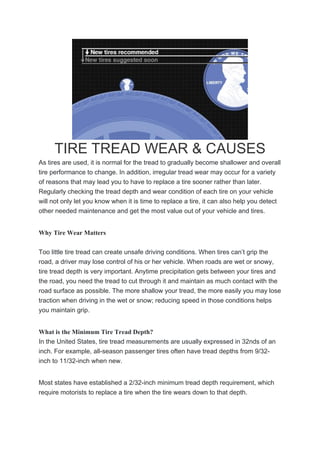Tire tread wear is normal with use, but can occur irregularly due to factors like improper inflation pressure or wheel alignment issues. Checking tread depth regularly allows early detection of needed maintenance. The minimum tread depth is 2/32 of an inch, at which point tires should be replaced. Improper inflation can cause uneven wear, while alignment problems lead to specific wear patterns like heel-toe wear from misaligned toes. Maintaining proper pressure and checking alignment prevents early or irregular tire tread wear.




